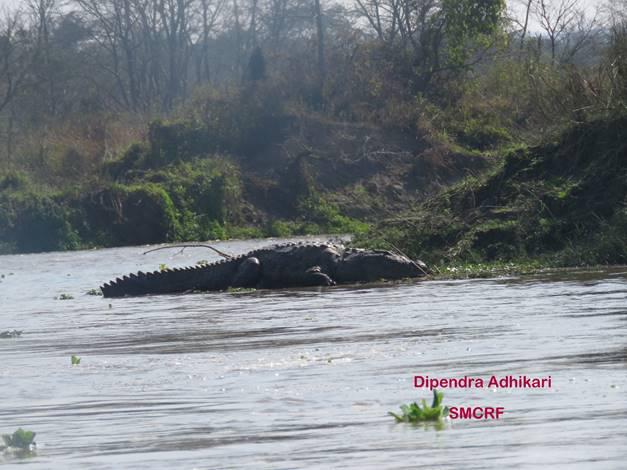Suraj Baral
The status of the crocodiles within Suklaphanta National Park is poorly defined and perception and acceptance of crocodile within the community are largely unknown. Crocodiles are increasingly considered as a nuisance in the farmland and risk of persecution and retaliatory killing of the crocodiles is probable. The proposed project is designed to provide a landscape based management plan for conserving the crocodile in human dominated landscapes through habitat and population estimation, conflict mitigation measures and the potential for crocodile based ecotourism within the landscape while also promoting awareness among the communities for crocodile conservation through various awareness programs.

©Dipendra Adhikari, SMCRF.
Globally “Vulnerable” mugger crocodile is restricted to protected areas in Nepal; Suklaphanta National Park and its surrounding being one of the prime habitat of viable mugger population in Nepal. Reports on human crocodile interaction outside the national park has been increasing as crocodiles disperse out to nearby agricultural land or fish farms where they are considered as a nuisance by people. Persecution of crocodiles due to fear and economic loss on fish farming or agricultural land is increasing every year. But relatively little concern for associated conflict, its impact on the livelihood of farmers and its mitigation measures has been given. The project is intended to inquire the cause, effect and measures to the prevent the problem of human crocodile interaction around the national park.
Habitat assessment- potential habitat, food availability, nesting and basking grounds and disturbance factors in and outside the national park and population status will be determined to find the cause of dispersal of the crocodile outside the park. Conflict assessment and perception surveys will be done to quantify effect of the interaction while willingness to pay and accept for crocodile conservation, will be presented to determine the potential measures of the prevention. Also, various awareness raising activities relating to wetland and crocodile conservation will be done in the area. All the results obtained will be compiled to prepare a management strategy of crocodiles within the area which can be a model to conserve crocodiles within human dominated landscapes.